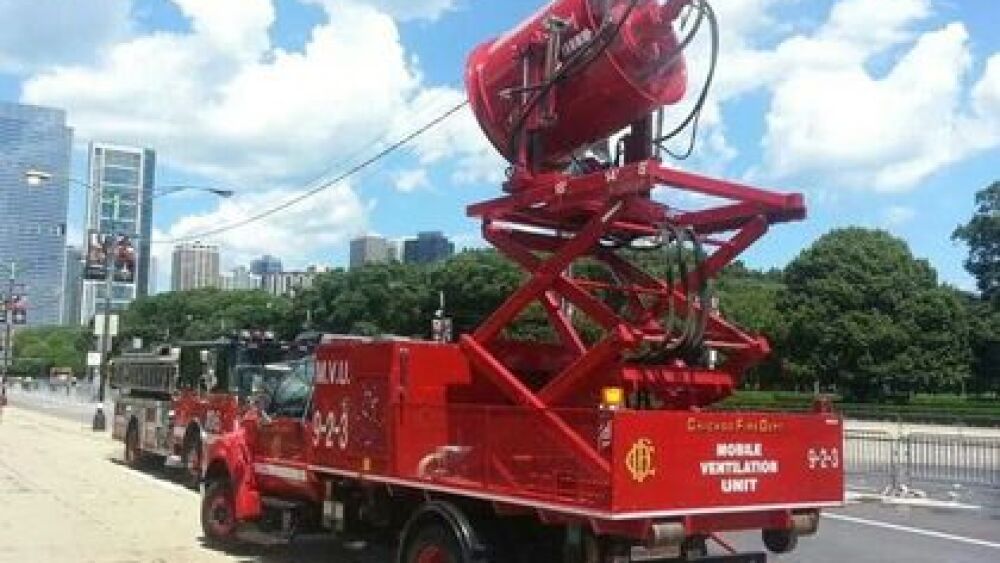Pumping apparatus and aerial devices are the backbone of the fire service in both the U.S. and Canada. No argument there, right?
At the same time, fire departments have always had an eye out for vehicles and equipment to fill particular emergency response niches. Some examples of creative purposing include:
- Four-wheel drive pickup trucks as the first brush trucks
- Delivery vans (e.g., the popular Chevy step-van) for special operations like hazmat, dive rescue and technical rescue
- Four-wheel drive ATVs for access to remote off-road locations
Commercial trucks have also been outfitted for SCBA support, scene lighting and much more.
Fire truck manufacturer solutions
As those homegrown solutions took root, apparatus manufacturers took notice of the special operations vehicle market and have taken the special operations vehicle to the next level – and beyond.
RKO Enterprises in Madison, Ind., designed two pieces of fire equipment for the Town of Jays Peak (Vt.) and Jay Peak Ski Resort to handle the unique firefighting needs in the community’s snowy and steep terrains near the border between Vermont and Canada. The two units operate as a team: one has a rear carrier to transport heavy duty pumping equipment and a water tank, while the other carries support equipment, such as hoses and handheld tools.
Fire department of all sizes can be tasked with providing emergency services at concerts, sporting venues or outdoor festivals. Fixed facilities (e.g., stadiums or arenas) can present large crowds, tight areas and long walking distances to an exit (where additional resources must stage). Smaller and more nimble apparatus, built on an ATV or beefed-up golf cart chassis are ideal for those situations.
The Miami (Fla.) Fire Rescue Department operates a small unit at major sporting events, such as Florida Marlins baseball games and Miami Dolphins football games. Many fire departments have adopted similar apparatus for operating in congested city environments.
The Akron (Ohio) Fire Department employs a compact vehicle to provide EMS during outdoor events in and around the city. The unit can carry a full-sized patient stretcher along with a full cadre of EMS equipment.
The Wildfire line of off-road firefighting/rescue vehicles from Alternative Support Apparatus, LLC, (ASAP) features a standard 160-gallon capacity low profile poly water tank with an integrated 16-gallon foam concentrate cell. The unit can also carry a securely loaded Stokes basket for patient evacuation from remote locations.
Special operations fire apparatus
Some of the earliest non-brush truck vehicles for special operations included mobile air units (carrying additional SCBA cylinders and equipped to refill cylinders), mobile light units and canteen units (early firefighter rehab support).
Technology advances in scene lighting (LED and high-intensity halogen lamps), along with size reductions for cylinder refill equipment have enabled manufacturers to create multi-purpose apparatus like the Santa Monica (Calif.) Fire Department’s Air and Light unit.
Chicago Fire’s Mobile Ventilation Unit gives Chicago Fire Department firefighters the ability to bring big air to ventilation and smoke removal operations in large spaces (e.g., high-rise buildings, warehouses, aircraft hangers and other locations) where airflow in the tens of thousands of CFM are needed.
The Aircore Firefighting Turbine Vehicle from Magirus, a German company, uses a high-velocity turbine for the nebulization of high amounts of water – efficient and effective suppression of big fires and large surfaces (e.g., flammable liquids fires or exterior fires).
In its fine-mist mode, the turbine can deliver 1,500 L/min a distance of 200 feet; for its high-water flow mode (using a monitor) the Aircore can deliver approximately 4,700 L/min about 265 feet. The Aircore is suitable for nebulizing water, foam, retarder and gel additives.
Repurposing heavy-duty truck chassis
GA Chivvis Fire Apparatus and Service of Lyndhurst, N.Y., takes refurbished 2.5-ton and five-ton military truck chassis and creates heavy-duty fire apparatus to the customer’s specifications. Below is an example of brush truck constructed using a 2 ½-ton chassis:
The company also specializes in the construction of high-water evac vehicles that can provide fire suppression as well as civilian evacuation capabilities in rugged terrain, low-level flooding or heavy snow. The company has produced many such vehicles for fire departments serving low-lying areas along the Atlantic seaboard that are prone to inland flooding from storms.
EMS special operations vehicles
The MedStat line of off-road ambulances from ASAP feature a fully enclosed, all aluminum patient care compartment that holds a full-sized patient stretcher and has seating for up to two attendants and a driver. The MedStat ambulance provides an all-weather response option for fire and EMS departments.
The Chesterfield County (Va.) Fire and EMS Department’s Medical Service Unit is a dual-purpose unit that combines on-scene firefighter rehabilitation functions and mass casualty incident response capabilities into one unit.
The MSU’s interior seating (each fully equipped with occupant restraint system) can be used for on-scene firefighter rehabilitation inside the unit or for the transport of multiple patients from rehab to a medical facility for further care.
For MCI response, the MSU has many of the EMS supplies carried aboard CFEMS ambulances that can be used to provide care to multiple patients. The MSU has the capacity to transport 10 patients to the hospital that are fully immobilized on a long backboard.













